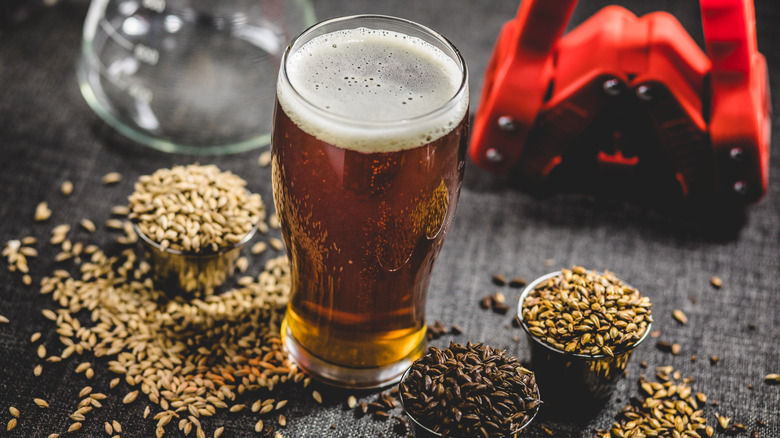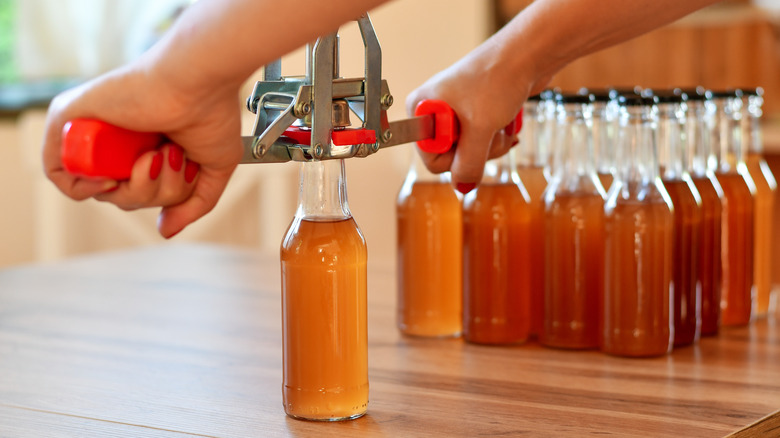Don't Homebrew Beer Without The Right Bottling Equipment
Like any hobby, homebrewing beer has a few costs associated with it, mostly in the form of purchasing equipment that you need to get started. While such concerns might seem like a long way off at the beginning of the beer-making process, you shouldn't start your homebrewing project without the right bottling equipment.
Though it's the last step, having something to store your brewed beer in should be of primary importance. Many experienced brewers use kegs, but bottling, though time-consuming, requires much less equipment. Bottling is also cheaper, making it a great option for novice homebrewers on a budget. Bottling kits are easy to come by and you can even recycle bottles you've already used.
Basic bottling equipment typically includes beer bottles (a five-gallon batch will fill about 54 bottles), a bottling bucket with a spigot, a spring-loaded bottle filler that will fit the spigot, priming sugar, bottle caps, and a capper. The last is a clamp-like device that provides an air-tight seal on the bottle. All of these items can be purchased at any brewing supply shop.
How to bottle your homebrewed beer
On bottling day, make sure all of your equipment, including bottles and caps, is sanitized. It also helps to have an extra set of hands on bottling day, as it can be tricky to work the spigot and fill the bottles at the same time. Before you add the beer to the bottling bucket, make a priming sugar solution of sugar dissolved in boiling water. The sugar will activate the yeast in the beer, thereby providing carbonation. You'll need one ounce of priming sugar per gallon of beer.
Integrate a rack system so that your bottling bucket is higher than the bottles. Gravity is your friend here. Once all your equipment is set up, open the spigot and insert the spring-loaded bottle filler into the bottle. Press downwards and release the liquid into the bottle until it reaches the rim of the bottle's neck.
Begin the capping process once all the bottles are filled. Place a cap on the bottle of beer and, using the capping clamp, seal the bottle so that it's airtight. Depending on the type of beer you've brewed, it will need to sit in a cool, dark storage area for at least two weeks to be properly carbonated. Listen for the characteristic crack and fizz sound when you open the bottle, which signals that the beer is ready to drink.

